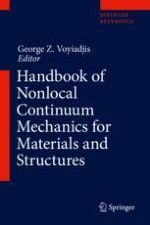2019 | OriginalPaper | Buchkapitel
16. Higher Order Thermo-mechanical Gradient Plasticity Model: Nonproportional Loading with Energetic and Dissipative Components
verfasst von : George Z. Voyiadjis, Yooseob Song
Erschienen in: Handbook of Nonlocal Continuum Mechanics for Materials and Structures
Aktivieren Sie unsere intelligente Suche, um passende Fachinhalte oder Patente zu finden.
Wählen Sie Textabschnitte aus um mit Künstlicher Intelligenz passenden Patente zu finden. powered by
Markieren Sie Textabschnitte, um KI-gestützt weitere passende Inhalte zu finden. powered by
